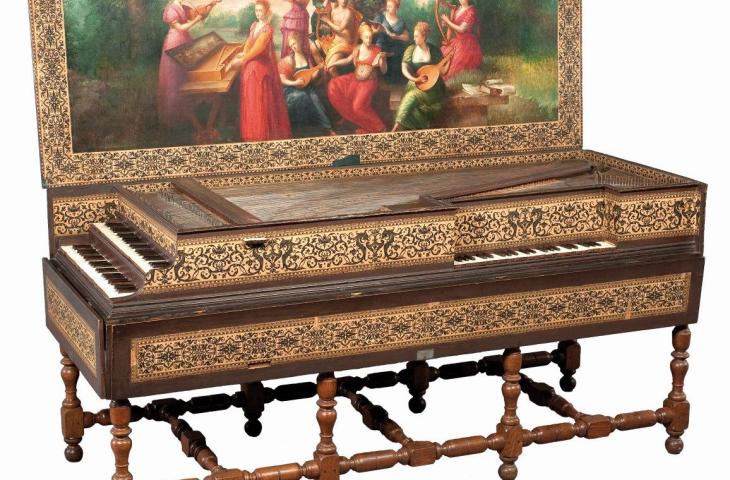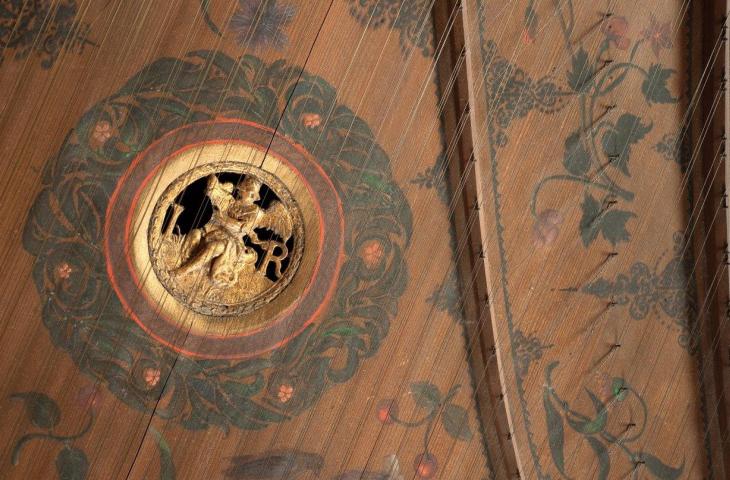Harpsichord with virginal

Harpsichord with virginal, Joannes Ruckers, Antwerp, 1619, inv. 2935
Harpsichord with virginal

Harpsichord with virginal, Joannes Ruckers, Antwerp, 1619, inv. 2935
From the end of the sixteenth to the mid-seventeenth century, the Ruckers dynasty built harpsichords and virginals of exceptional quality. Their instruments were a continual source of inspiration for English, French and German makers, and were much sought after, so much so that forgeries rapidly made their appearance.
One of the most singular instruments to have come out of the Ruckers workshop is undoubtedly this harpsichord with virginal. It was signed in 1619 by Joannes Ruckers, son of the dynasty founder Hans Ruckers. The rectangular sound-box houses both a two-manual harpsichord and a small virginal that is set on the curved side of the larger instrument. In accordance with Ruckers family tradition, the sides of the box are decorated with printed strips of paper and with depictions of sea horses, as well as stylized motifs. Flower, bird and insect motifs are painted in tempera on the sound-board, the motifs being taken from decoration catalogues. The painting displayed on the inside of the lid portrays Apollo and the Muses and is of later date than the instrument; it is a copy of a painting by Maarten De Vos that is in the collection of the Royal Museums of Fine Arts of Belgium.